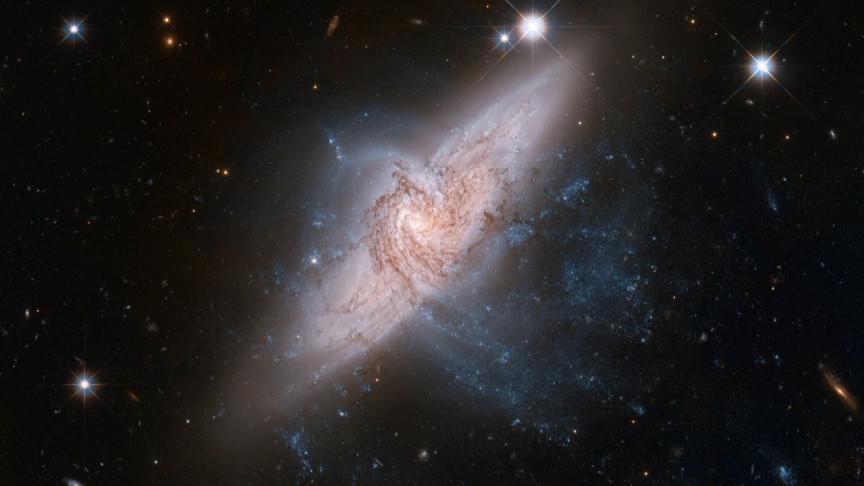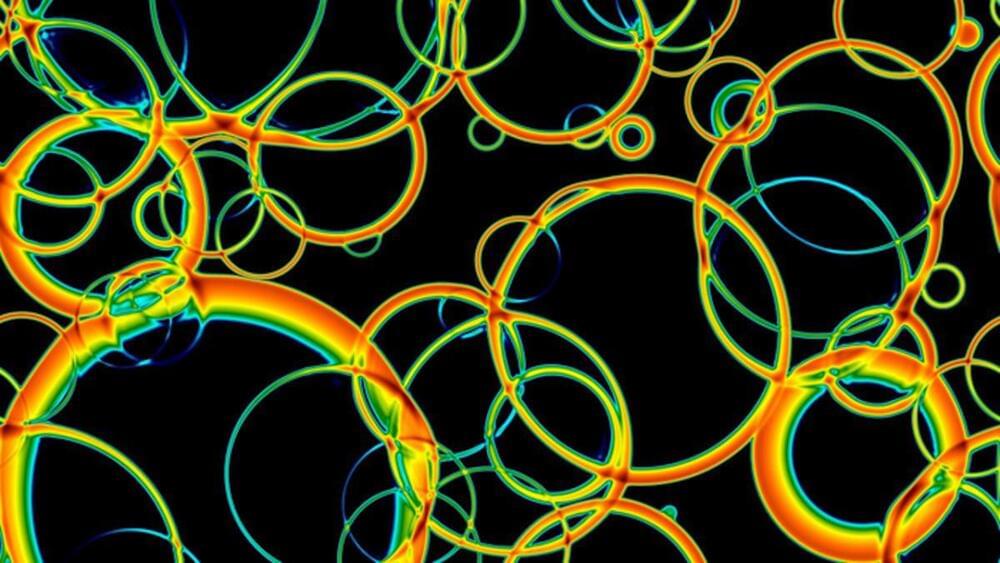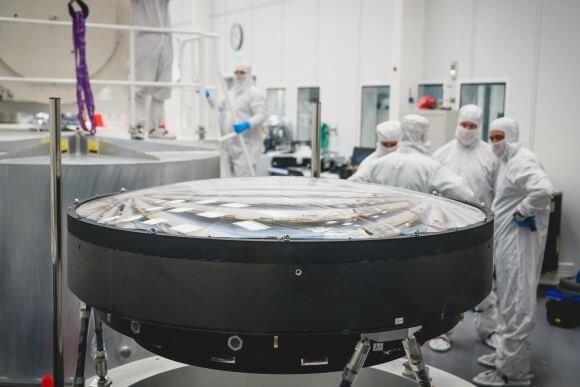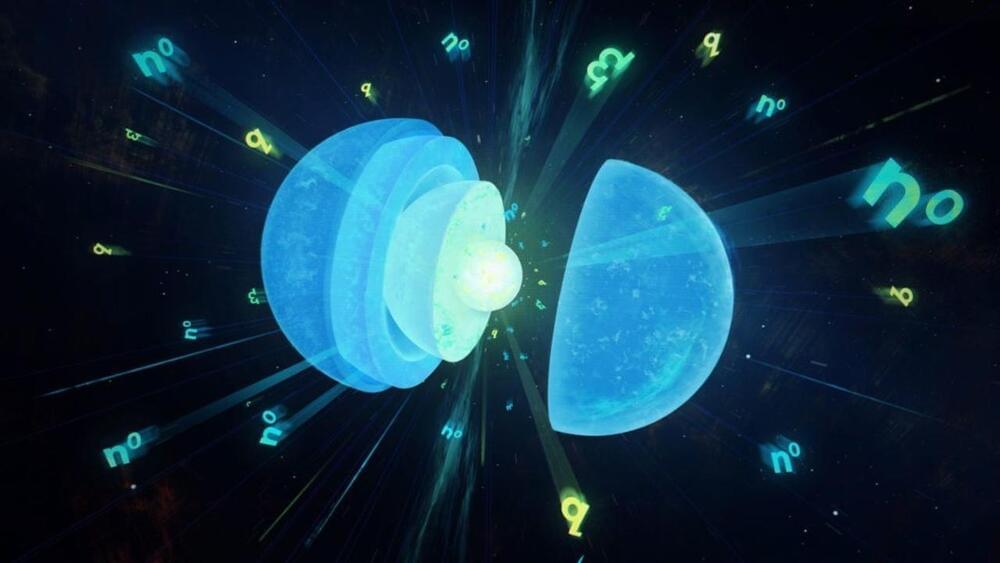
Category: cosmology – Page 264


The Arrow of Time in Causal Networks
April, 2022
Sean Carroll (Caltech and Santa Fe Institute)
https://simons.berkeley.edu/events/causality-program-externa…-institute.
Causality.
Abstract:
A macroscopic arrow of time can be derived from reversible and time-symmetric fundamental laws if we assume an appropriate notion of coarse-graining and a Past Hypothesis of low entropy at early times. It is an ongoing project to show how familiar aspects of time’s arrow, such as the fact that causes precede effects, can be derived from such a formalism. I will argue that the causal arrow arises naturally when we describe macroscopic systems in terms of a causal network, and make some suggestions about how to fit prediction and memory into this framework.
Sean Carroll is a Research Professor of theoretical physics at the California Institute of Technology, and Fractal Faculty at the Santa Fe Institute. He received his Ph.D. in 1993 from Harvard University. His research focuses on foundational questions in quantum mechanics, spacetime, cosmology, emergence, entropy, and complexity, occasionally touching on issues of dark matter, dark energy, symmetry, and the origin of the universe. Carroll is the author of Something Deeply Hidden, The Big Picture, The Particle at the End of the Universe, From Eternity to Here, and Spacetime and Geometry: An Introduction to General Relativity. He has been awarded prizes and fellowships by the National Science Foundation, NASA, the Sloan Foundation, the Packard Foundation, the American Physical Society, the American Institute of Physics, the American Association for the Advancement of Science, the Freedom From Religion Foundation, the Royal Society of London, and the Guggenheim Foundation. Carroll has appeared on TV shows such as The Colbert Report, PBS’s NOVA, and Through the Wormhole with Morgan Freeman, and frequently serves as a science consultant for film and television. He is host of the weekly Mindscape podcast. He lives in Los Angeles with his wife, writer Jennifer Ouellette.

Upcoming satellite mission may ‘see’ how early universe cooled
As the early universe cooled shortly after the Big Bang, bubbles formed in its hot plasma, triggering gravitational waves that could be detectable even today, a new study suggests.
For some time, physicists have speculated that a phase transition took place in the early universe shortly after the Big Bang. Phase transition is a change of form and properties of matter that usually accompanies temperature changes such as the evaporation of water into vapor or the melting of metal. In the young and fast expanding universe, something similar likely took place as the plasma, which was filling the space at that time, cooled down.

ATLAS strengthens its search for supersymmetry
Where is all the new physics? In the decade since the Higgs boson’s discovery, there have been no statistically significant hints of new particles in data from the Large Hadron Collider (LHC). Could they be sneaking past the standard searches? At the recent Rencontres de Moriond conference, the ATLAS collaboration at the LHC presented several results of novel types of searches for particles predicted by supersymmetry.
Supersymmetry, or SUSY for short, is a promising theory that gives each elementary particle a “superpartner”, thus solving several problems in the current Standard Model of particle physics and even providing a possible candidate for dark matter. ATLAS’s new searches targeted charginos and neutralinos – the heavy superpartners of force-carrying particles in the Standard Model – and sleptons – the superpartners of Standard Model matter particles called leptons. If produced at the LHC, these particles would each transform, or “decay”, into Standard Model particles and the lightest neutralino, which does not further decay and is taken to be the dark-matter candidate.
ATLAS’s newest search for charginos and sleptons studied a particle-mass region previously unexplored due to a challenging background of Standard Model processes that mimics the signals from the sought-after particles. The ATLAS researchers designed dedicated searches for each of these SUSY particle types, using all the data recorded from Run 2 of the LHC and looking at the particles’ decays into two charged leptons (electrons or muons) and “missing energy” attributed to neutralinos. They used new methods to extract the putative signals from the background, including machine-learning techniques and “data-driven” approaches.

The Large Hadron Collider has restarted after 3 years of upgrades
Scientists shut down the particle accelerator in 2018 to allow for upgrades (SN: 12/3/18). On April 22, protons once again careened around the 27-kilometer-long ring of the Large Hadron Collider, or LHC, located at the particle physics laboratory CERN in Geneva.
The LHC is coming out of hibernation gradually. Researchers started the accelerator’s proton beams out at relatively low energy, but will ramp up to slam protons together at a planned record-high energy of 13.6 trillion electron volts. Previously, LHC collisions reached 13 trillion electron volts. Likewise, the beams are starting out wimpy, with relatively few protons, but will build to higher intensity. And when fully up to speed, the upgraded accelerator will pump out proton collisions more quickly than in previous runs. Experiments at the LHC will start taking data this summer.
Physicists will use this data to further characterize the Higgs boson, the particle discovered at the LHC in 2012 that reveals the source of mass for elementary particles (SN: 7/4/12). And researchers will be keeping an eye out for new particles or anything else that clashes with the standard model, the theory of the known particles and their interactions. For example, researchers will continue the hunt for dark matter, a mysterious substance that so far can be observed only by its gravitational effects on the cosmos (SN: 10/25/16).

Small explosions called micronovae discovered on dead stars
Micronovae are about 1 million times less bright than a classical nova, says Scaringi, lasting just half a day, compared with several weeks for novae.
The brevity of the events meant they had previously been missed, but TESS was able to spot them during its around-the-clock observations of the galaxy in search of exoplanets. Three were seen up to 5,000 light years from Earth, with the white dwarfs brightening temporarily before dimming again.
The exact mechanism behind the explosions isn’t clear, but it is thought they may be caused by hydrogen accumulating at the poles of the star – perhaps as much as the mass of an asteroid in just 100 days. Eventually, the hydrogen reaches sufficient temperatures and pressures to ignite fusion and cause a localised thermonuclear explosion that releases as much energy as the sun would in a day.

Giant space telescopes could be made out of liquid
The Hubble space telescope has a primary mirror of 2.4 meters. The Nancy Grace Roman telescope also has a mirror measuring 2.4 meters, and the James Webb Space Telescope has a whopping 6.5 meter primary mirror. They get the job done that they were designed to do, but what if… we could have even bigger mirrors?
The larger the mirror, the more light is collected. This means that we can see farther back in time with bigger mirrors to observe star and galaxy formation, image exoplanets directly, and work out just what dark matter is.
But the process for creating a mirror is involved and takes time. There is casting the mirror blank to get the basic shape. Then you have to toughen the glass by heating and slow cooling. Grinding the glass down and polishing it into its perfect shape comes next followed by testing and coating the lens. This isn’t so bad for smaller lenses, but we want bigger. Much bigger.

The Solar Energy Multiverse Keeps Expanding: Perovskites, Shape-Shifting Molecules, & More
Solar energy has barely scratched the surface of its potential to decarbonize the global economy in time to avert catastrophic warming.
For all the activity in the solar energy marketplace, PV technology has barely even begun to hit the global economy in full force. Huge solar arrays filled with rows of super-efficient silicon solar panels are just one piece of an expanding universe. With that in mind, here are 4 new developments that could kick the slow pace of change into high gear.
1. Distributed Solar Energy
Distributed renewables are a big deal for the US Department of Energy and other solar energy planners, but they generally don’t catch the media spotlight. That’s because they tend to be small. On an individual basis, distributed energy resources range down to the kilowatt scale. They are easily eclipsed by huge multi-million megawatt PV arrays.

What’s Really Going on Inside a Neutron Star
Scientists are finally getting closer to figuring out the puzzle of the structure of neutron stars and revealing the nature of their ultra-dense interiors.
In theories of stellar evolution, neutron stars are considered one of the end states of stars, along with white dwarfs and black holes. As a star evolves it will enter stages of expansion as hydrogen is fused into helium and so on through the periodic table of elements. Depending on the mass of the star, a limit will be reached whereby nuclear fusion can no longer take place and the star is no longer able to overcome the immense gravitational force which it has been holding back for all these years. As a result, the star implodes, ejecting its outer layers as a planetary nova or a supernova, leaving only a mere remnant of its former self behind – or so the story goes.
For massive stars, the implosion is so great that it crushes its stellar matter to such high densities that the oppositely charged electrons and protons are forced so close together that they fuse to become neutrons, hence creating a neutron star. This neutron star is so dense that a single teaspoonful could weigh a billion tonnes! For stars massive enough, it is further theorised that the gravitational collapse would be so great that it would instead crush the neutron star down to the size of an infinitesimal point, creating a black hole.